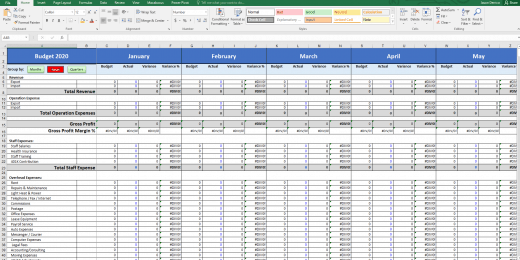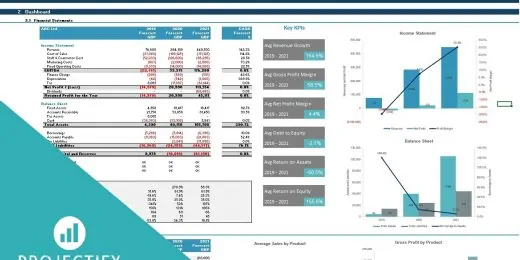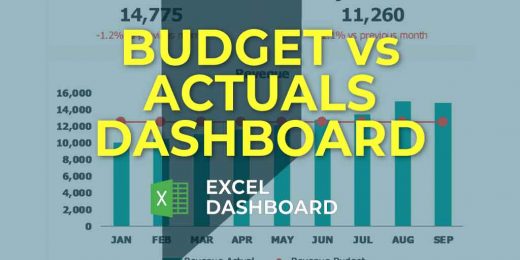How to Streamline Your Processes With Calculating Cash on Cash Return

To streamline your processes with calculating cash on cash return, utilize a formula to compare annual cash flow to the initial investment. This can help you assess the profitability and efficiency of your investment accurately.
Calculating cash on cash return is a crucial aspect of real estate investment analysis. It allows investors to evaluate the potential return on their investment relative to the initial capital outlay. Implementing this calculation method can provide valuable insights into the viability of an investment property and aid in making informed decisions.
By understanding how to streamline processes with cash on cash return, investors can make sound investment choices and maximize their returns. We will explore the significance of cash on cash return, its calculation method, and the benefits of incorporating it into your investment analysis.
Why Streamlining Processes Is Important
In today’s fast-paced business environment, streamlining processes has become an indispensable strategy for companies aiming to enhance efficiency and productivity. By refining operational methods, organizations can achieve more with less, ensuring they remain competitive and responsive to market demands. This approach is particularly relevant in three key areas: improving efficiency, reducing errors, and increasing productivity.
Improving Efficiency
Efficiency is the cornerstone of any successful business operation. It involves optimizing resources, including time, labor, and materials, to produce the best possible outcomes. Streamlining workflows and eliminating unnecessary steps in the production process can significantly enhance efficiency. This might involve automating routine tasks, integrating technology to manage and analyze data more effectively, or reorganizing teams to capitalize on their strengths. By focusing on efficiency, businesses can ensure that they are not only delivering quality products and services but doing so in the most cost-effective manner.
Reducing Errors
In addition to improving efficiency, minimizing errors is critical, especially in areas where precision is paramount, such as financial calculations. Errors can lead to significant financial losses, damage to reputation, and a loss of customer trust. Implementing checks and balances, utilizing software for error checking, and training employees thoroughly can help in reducing the likelihood of mistakes. Streamlined processes that include clear guidelines and steps for quality assurance can significantly mitigate the risk of errors, ensuring that operations run smoothly and outputs remain reliable.
Increasing Productivity
Streamlining processes not only enhances efficiency and reduces errors but also significantly boosts productivity. When workflows are optimized, and obstacles are removed, employees can accomplish more in less time. This increase in productivity can lead to higher outputs without a corresponding increase in inputs, thereby improving the overall profitability and viability of the business. It also allows businesses to respond more quickly to changes in market demand, giving them a competitive edge.
In conclusion, streamlining processes is not just about making tasks easier or faster; it’s about fundamentally improving how a business operates to maximize efficiency, minimize errors, and boost productivity. These improvements can lead to substantial benefits, including cost savings, higher quality outputs, and improved customer satisfaction. As such, companies that prioritize streamlining their processes are well-positioned to thrive in the competitive business landscape.
Understanding Cash On Cash Return
The concept of Cash on Cash Return plays a pivotal role in the realm of real estate investment. It’s a metric that gives investors insight into the profitability of their investment properties by highlighting the return generated on the actual cash invested. This indicator is not just about the numbers; it’s about understanding the efficiency and potential success of an investment.
Definition Of Cash On Cash Return
At its core, the Cash on Cash Return is a ratio that measures the cash yield on a property over a specific period, typically a year, in relation to the amount of cash initially invested. This figure is expressed as a percentage and is calculated by dividing the annual cash flow before tax by the total amount of cash invested. The outcome of this calculation gives investors a clear and straightforward understanding of their investment’s performance in terms of the actual cash returns generated.
Importance Of Cash on Cash Return
The significance of the Cash on Cash Return metric extends beyond mere number crunching. It serves as a critical tool for investors, providing them with valuable insights into the return on their cash investment. This information is instrumental in making informed decisions, comparing investment opportunities, and strategizing to maximize profitability.
For example, a high Cash on Cash Return indicates a lucrative investment opportunity, where the investor is making a significant return on the cash invested. Conversely, a low Cash on Cash Return might signal that the investment is not performing as expected, prompting investors to reassess their strategies or consider alternative opportunities.
In conclusion, understanding and utilizing the Cash on Cash Return metric is essential for anyone involved in real estate investment. It not only offers a snapshot of an investment’s current performance but also aids in strategic planning and decision-making to ensure the maximization of returns. Whether you’re a seasoned investor or new to the world of real estate, paying attention to your investments’ Cash on Cash Return can significantly influence your success in the industry.
Calculating Cash On Cash Return
When it comes to real estate investing, understanding the return on your investment is crucial. One metric that can help you gauge the profitability of a rental property is the cash on cash return. This calculation allows you to assess the cash income generated by the property and compare it to the initial investment. By streamlining your processes and effectively calculating the cash on cash return, you can make informed decisions about your real estate investments.
Identifying The Initial Investment
The first step in calculating the cash on cash return is identifying the initial investment. This includes all the costs associated with purchasing the property, such as the purchase price, closing costs, and any renovation or repair expenses. Additionally, it’s essential to consider any financing costs, such as loan origination fees or points paid. By considering all these elements, you can accurately determine the total initial investment.
Determining The Cash Flow
-
Once you have identified the initial investment, the next step is to determine the cash flow generated by the rental property. This includes all the income sources like monthly rent, parking fees, or any other recurring revenue streams. It’s crucial to deduct operating expenses related to the property, such as property management fees, maintenance costs, property taxes, insurance, and utilities. By subtracting these expenses from the total income, you can determine the net cash flow generated by the property.
-
Additionally, it’s important to consider any loan payments if you have financed the property. Deduct the monthly mortgage payment or any other loan payments from the net cash flow to get the actual cash flow. This step ensures that you account for the financing costs and provides a more accurate reflection of the property’s profitability.
Once you have determined the cash flow, you can calculate the cash on cash return. This calculation compares the net cash flow generated by the property to the initial investment you identified earlier. To calculate the cash on cash return percentage, divide the net cash flow by the initial investment and multiply by 100. This percentage represents the annual return on your investment based on the cash income generated.
By streamlining your processes and effectively calculating the cash on cash return, you can make informed decisions about your real estate investments. Identifying the initial investment, determining the cash flow, and calculating the cash on cash return allows you to assess the profitability of a rental property and compare it to other investment opportunities. This metric provides valuable insights into the potential returns and helps you optimize your real estate portfolio.
Benefits Of Utilizing Cash On Cash Return
Looking to streamline your processes? Utilizing Cash on Cash Return can help you make more informed investment decisions. By calculating this metric, you can determine the profitability of your real estate investments and ensure optimal returns.
Tracking Performance
When evaluating real estate investments, calculating cash on cash return can provide essential insights that help streamline your financial processes. By utilizing this metric, investors can efficiently evaluate investment opportunities, make better financial decisions, and track performance. Let’s delve into the benefits of incorporating cash on cash return into your investment strategy.
Evaluating Investment Opportunities
By incorporating a cash on cash return calculation into your investment analysis, you can effectively compare various investment opportunities. This enables you to identify the most profitable prospects and steer clear of underperforming ones. With this, you can make informed decisions regarding where to allocate your resources.
Making Better Financial Decisions
Utilizing cash on cash return helps you make better financial decisions by providing a clear picture of your potential return on investment. This empowers you to gauge the profitability of different investment options, allowing you to allocate your funds strategically. By considering this metric, you can optimize your investment portfolio and enhance your financial outcomes.
Tracking Performance
Implementing cash on cash return allows you to track performance and assess the success of your investments over time. This insight enables you to identify trends, evaluate the effectiveness of your investment strategies, and make adjustments as needed to maximize your returns. By continuously monitoring this metric, you can maintain a proactive approach to managing your investments.
Incorporating cash on cash return into your investment strategy yields valuable insights that can streamline your processes, inform your decisions, and improve your overall financial performance. By leveraging this metric, you can effectively evaluate investment opportunities, optimize your financial choices, and track the performance of your portfolio.
Tools And Software For Streamlining Cash On Cash Return Calculations
When it comes to real estate investment, efficiency is key. One crucial aspect of evaluating the potential of an investment is calculating the cash on cash return. Streamlining this process can save time and provide investors with valuable insights. Utilizing the right tools and software can make cash on cash return calculations more efficient and accurate.
Spreadsheet Applications
In the world of real estate investment, spreadsheet applications such as Microsoft Excel and Google Sheets are widely used for financial analysis. These versatile tools allow investors to create custom formulas and templates for calculating cash on cash return. With the ability to automate calculations, organize data, and generate graphs, spreadsheet applications can significantly streamline the cash on cash return analysis process.
Real Estate Investment Software
Real estate investment software such as REI Pro and PropertyMetrics provide specialized features for analyzing investment opportunities. These platforms offer functionalities that cater specifically to real estate investors, including automated cash on cash return calculations, property valuation tools, and financial forecasting capabilities. By leveraging real estate investment software, investors can streamline their cash on cash return analysis and gain deeper insights into their investments.
Online Cash On Cash Return Calculators
For a quick and hassle-free approach to calculating cash on cash return, online cash on cash return calculators can be invaluable. These web-based tools allow users to input property details and financing information to instantly compute the cash on cash return. With user-friendly interfaces and intuitive design, online calculators simplify the process and eliminate the need for manual calculations.
Best Practices For Streamlining Processes
Streamlining processes is essential for any business to operate efficiently and stay ahead of the competition. By implementing best practices, businesses can save time, reduce costs, and improve overall productivity. In this article, we will explore three key strategies for streamlining processes: standardizing procedures, automating manual tasks, and implementing data integration.
Standardizing Procedures
Standardizing procedures is crucial for ensuring consistency and minimizing errors in your everyday operations. By establishing clear and comprehensive guidelines for each task or process, you can streamline activities and enhance productivity. Here are a few best practices for standardizing procedures:
- Create a centralized repository: Maintain a centralized location for storing and accessing standardized procedures. This enables easy access for employees, reduces confusion, and facilitates knowledge sharing.
- Document step-by-step instructions: Clearly outline the steps required to complete each procedure. Use bullet points or numbers to make instructions concise and easy to follow.
- Provide training and updates: Regularly train your employees on standardized procedures and keep them informed about any changes or updates. This ensures everyone is on the same page and adhering to the established guidelines.
Automating Manual Tasks
Automating manual tasks can significantly speed up processes, reduce errors, and free up valuable time for your employees. By using technology to handle repetitive or time-consuming tasks, you can achieve greater accuracy and efficiency in your operations. Consider the following best practices for automating manual tasks:
- Identify repetitive tasks: Determine which tasks can be automated to save time and improve efficiency. Analyze your workflow to identify bottlenecks and areas where automation can have the most significant impact.
- Select the right tools: Choose automation tools or software that align with your business needs and integrate seamlessly with your existing systems. Take advantage of tools that offer features such as task scheduling, data entry automation, and workflow management.
- Train employees on automation tools: Provide adequate training to your employees on how to use the automation tools effectively. This will ensure they can make the most of the technology and leverage its benefits.
Implementing Data Integration
Data integration involves combining and analyzing data from different sources to obtain actionable insights and make informed business decisions. By integrating your data effectively, you can eliminate duplication, improve data accuracy, and streamline processes. Consider the following best practices for implementing data integration:
- Identify integration needs: Assess your data requirements and identify the sources that need to be integrated. Determine the key data points that need to flow seamlessly across systems to enhance productivity.
- Choose the right integration tools: Select integration tools that are compatible with your existing systems and offer the features you need. Look for tools that can automate data synchronization, provide real-time updates, and offer data cleansing capabilities.
- Regularly review and optimize integration: Continuously monitor and review your data integration processes to ensure they are efficient and error-free. Look for opportunities to optimize and improve integration workflows as your business evolves.
Common Challenges When Streamlining Processes
Streamlining processes can present common challenges, but calculating cash on cash return can help streamline your operations efficiently. By analyzing the financial profitability of your investments, you can identify areas for improvement and make informed decisions to optimize your business processes.
In the rapidly evolving business landscape, organizations continually adopt new technologies and methodologies to stay competitive and efficient. However, this journey towards innovation is often met with several challenges that can impede progress and performance. Among these, resistance to change, lack of technological expertise, and data inaccuracy are significant hurdles that businesses need to address effectively.
Resistance to Change
One of the most common barriers to implementing new systems and processes in the workplace is resistance to change. Employees may cling to established habits and routines, viewing new methodologies with skepticism and apprehension. This resistance often stems from a fear of the unknown, concerns about job security, or simply the discomfort of stepping out of one’s comfort zone. Overcoming this resistance is crucial for organizations, requiring clear communication, involvement of employees in the change process, and adequate support to navigate the transition.
Lack of Technological Expertise
As businesses incorporate more sophisticated technologies into their operations, a gap in technological expertise among staff can become a prominent issue. Employees may struggle with utilizing advanced software and tools effectively if they do not receive the necessary training and support. This lack of expertise can lead to underutilization of new technologies, diminishing the potential benefits and efficiencies they can bring. Providing comprehensive training programs and ongoing support can help bridge this gap, enabling staff to leverage new technologies to their full potential.
Data Inaccuracy
In the digital age, data drives decisions. However, the integrity of these decisions is heavily dependent on the accuracy of the underlying data. Incorrect data input, whether due to human error or system faults, can lead to inaccurate analysis and flawed decision-making. This challenge underscores the importance of implementing robust data management practices, including error checking, validation processes, and training employees on the significance of accurate data entry. Addressing data inaccuracy not only enhances decision-making but also boosts confidence in the systems and processes that rely on this data.
In conclusion, while adopting new systems and methodologies presents an array of benefits for organizations, navigating the challenges of resistance to change, lack of technological expertise, and data inaccuracy is essential for realizing these benefits. By addressing these issues head-on, businesses can foster a culture of continuous improvement and innovation, positioning themselves for success in a dynamic and competitive environment.
Case Studies On Successful Process Streamlining
Company A: Streamlining Cash On Cash Return Calculations
Company A simplified their cash on cash return calculations by implementing an automated system.
Company B: Implementing Automation To Improve Efficiency
By leveraging automation tools, Company B enhanced efficiency in cash on cash return analysis.
Company C: Enhancing Data Integration For Accurate Analysis
Company C improved accuracy by integrating data sources for cash on cash return evaluations.
Frequently Asked Questions
What Is Cash On Cash Return?
Cash on Cash Return is a financial metric that evaluates the annual return on an investment property. It measures the cash income earned on the cash invested in the property. It is a valuable tool for real estate investors to gauge the profitability of their investments.
How To Calculate Cash On Cash Return?
To calculate Cash on Cash Return, divide the annual pre-tax cash flow by the total cash invested. The result is expressed as a percentage, providing investors with a clear understanding of the potential returns on their real estate investments. This calculation enables informed decision-making and assessment of investment opportunities.
Why Is Cash On Cash Return Important?
Cash on Cash Return is essential for investors as it indicates the potential profitability of a real estate investment. By evaluating the cash income relative to the actual cash invested, investors can make better decisions, compare different investment opportunities, and assess the performance of their real estate portfolio effectively.
How Does Cash On Cash Return Impact Decision Making?
Cash on Cash Return influences decision making by providing investors with a clear understanding of the potential returns on an investment property. It enables them to compare and evaluate different opportunities, assess risk, and make informed decisions that align with their investment goals and financial objectives.
Conclusion
Calculating cash on cash return is a valuable tool for streamlining your processes and making informed decisions. By understanding how to analyze this financial metric, you can assess the profitability and efficiency of your investments accurately. With its simplicity and effectiveness, cash on cash return empowers you to maximize your returns and optimize your business strategies.
Start implementing this calculation in your financial analysis today for faster and smarter decision making.



















































